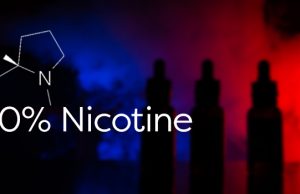How would you react if I put some Pentahydroxyhexanal in your coffee mug?
It may look strange but it is right, when you name a chemical by its real name, it always looks more harmful. James Dunworth is completely right in his review on Prolylene Glycol when he says that chemicals are all around us but not necessarily harmful. Dihydrogen monoxide and Pentahydroxyhexanal are just water and sugar and each of us consumes them everyday.
Is Propylene Glycol dangerous to inhale?
As everyone knows, or not, Propylene glycol or PG is is one of the major constituents of our e-liquids and whether is it dangerous upon inhalation is nagging all of us. Beyond the chemical properties of the molecule, a pertinent analysis has been made by the author.
GRAS…
Among other things, the article teaches us that PG is GRAS, generally recognized as safe, by the US FDA and the standards impose to be of pharmaceutical grade for commercial use.
Studies on animals
We also learn that most studies on PG involving animals concluded in the absence of toxicological effect or acute disease associated to the ingestion of the inhalation of the product, even during long-term (several weeks) exposure.
Studies on humans
Another interesting angle that is offered by the author is that the fog machines employed in the theatres to give more depth to the shots also use PG. Hence, a major source of human-related studies are those that consider theatre staff exposure to artificial fog. Here again, no acute diseases were found when considered that exposure was to PG but also to other chemicals contained in the liquid.
Absolute risk versus relative risk
“PG isn’t an angel, but it probably isn’t going to kill you either”
This is the conclusion that is drawn by the author, based on his careful analysis in addition to advices in order to reduce the potential risks associated to the molecule.













PG has been used in hospitals for many years as an antiseptic and also injected into air -conditioning system in wards containing children suffering from chest infections with satisfactory results. In 2007 the EPA (USA) re-registered its use in hospitals and said “There are no endpoints of concern for oral, dermal or inhalation exposure to propylene glycol”
PG has also been tested as a “carrier” to provide immunosuppressant to patients undergoing lung transplants!
After smoking a quarter of a million cigarettes over 69 years I was diagnosed with COPD, the disease which killed my son aged only 47. I traded tobacco for e-cigs in less than a week, 5 years ago. My lung function was 50% normal. After 5 years it has improved regularly & stabilised at 88% and my breathing has improved and I now swim a length under water, thus demonstrating the bodies remarkable recuperative capabilities even after 69 years of abuse. I am now 85 years old and still getting my nicotine fix and enjoying the oral, tactile and physcological effects of vaping without using tobacco. my message — IT IS NEVER TOO LATER TO STOP USING TOBACCO